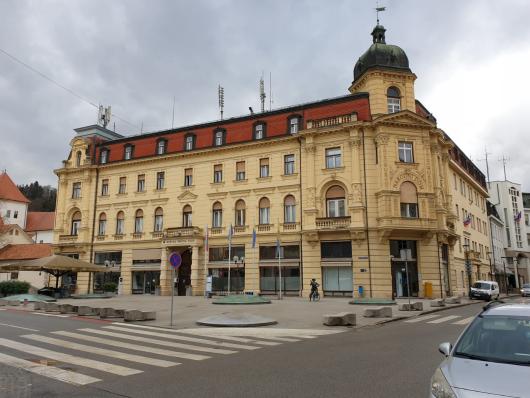
Jan Vladimír Hráský, Czech engineer, constructor and hydrologist, significantly influenced the urban development of Ljubljana at the end of the 19th century
26.03.2021 / 11:09 | Aktualizováno: 26.03.2021 / 11:14
Jan Vladimír Hráský was a Czech civil engineer, hydrologist, balneologist, politician and university professor of engineering, water supply and urban drainage at the Imperial and Royal Czech Technical University in Prague, where he also held the post of rector in 1900-1901. From 1884 to 1897, he worked in Ljubljana as a provincial engineer and significantly influenced the construction development of Ljubljana at the end of the 19th century.
Jan Vladimír Hráský worked in Ljubljana, got married here and soon became a member of the Ljubljana City Council thanks to his remarkable results. Although Hráský was a civil engineer by education, he also worked as an architect. In 1889, he was commissioned to build the Provincial Theater, where the Ljubljana Opera House is located today. He collaborated on this project with the Czech architect Anton J. Hrubý. The building was built in 1892 in the Neo-Renaissance style.
During his stay in Ljubljana in 1895, a strong earthquake struck Ljubljana. However, the consequences did not only have negative effects. The reconstruction of the city after the earthquake became an opportunity for the establishment of modern Ljubljana and Hráský was one of the main initiators of the new urban construction plan.
During the reconstruction of Ljubljana, Hráský also created a restoration plan for the Provincial palace (since 1919, the seat of the University of Ljubljana has been located here), which was seriously damaged by the earthquake. As the plan exceeded the terms of reference, it had to be revised. This task was accepted by the Viennese architect of Czech origin Josip Hudetz, who, however, did not fundamentally change the functional concept of Hráský, emphasizing in particular the change of the exterior.
Although he left his greatest architectural traces in Ljubljana, the work of J. Hráský can also be found in other parts of Slovenia. The building of the National Hall (1896) was built on the square "Trg celjskih knezov" in Celje according to his design, on which he collaborated with another Czech architect Jan Vejrych. Today, the building houses the offices of the municipal authorities. At the time of its establishment, the house was a symbol of Slovenian nationalism, the cultural and social hub for the Slovenian-speaking citizens.
Even though J. Hráský's specialization was mainly hydrology, he focused on water structures and the regulation of watercourses. His works in Slovenia also include the water tower in Kranj, which is a cultural monument of local significance and was built after his return to Bohemia in 1909–1911. Despite its condition and age of more than a hundred years, the tower is still used and connected to the public water supply network of the city of Kranj. Other works include the iron bridge over the Sava River in the town of Radeče, which was the third largest bridge in the Austro-Hungarian Empire at the time of its construction. Today, the bridge is a technical monument of local importance and a tourist attraction for pedestrians and cyclists.
J. Hráský was also active in public life. He was especially supportive of Czech-Slovenian culture and involved in alpinism and speleology. After returning to Bohemia, he continued to pursue hydrology and lectured on water supply, land reclamation and sewerage at the Prague University of Technology. He settled in Poděbrady, the birthplace of his mother and even here, he was active at the local political level. He died in Prague in 1939.








